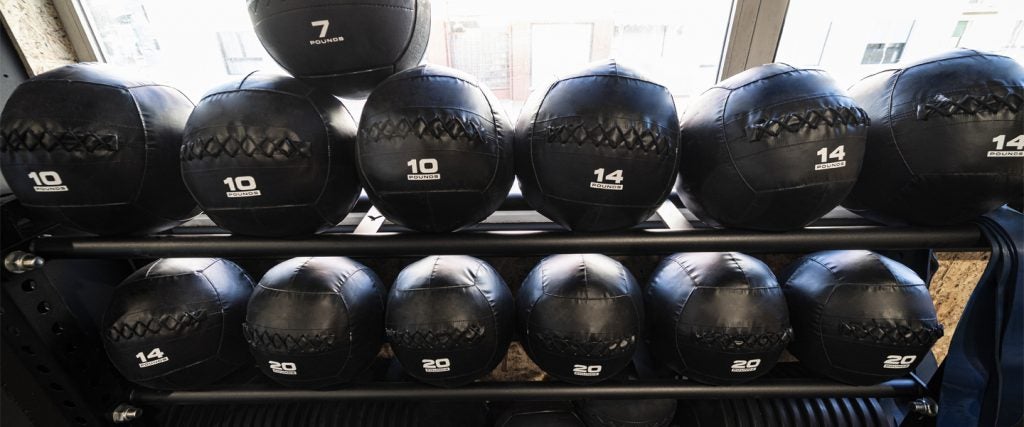Those of us who didn’t specialize in sports like football, basketball and soccer have been known to content ourselves with T-shirts that feature clever and cute statements like, “Swim… because all other sports involve playing with your balls.”
But these days, the obsession with balls stretches far beyond organized sports. In fact, the gym — CrossFit or otherwise — is overflowing with them. From medicine balls, to slam balls, to wall balls, they’re seemingly the workout accessory du jour. I mean, they’re even what Thor trains with.
But those balls are all basically the same, right? They’re just really heavy balls.
Not really. Saying that a medicine ball and a slam ball are the same is like saying that a volleyball and a water polo ball are the same because their diameters are basically identical. But try substituting those balls in each of their respective sports and then watch what happens. That water polo ball would take some very soft bounces off of the volleyball players’ wrists and hands, and the volleyball would squirt and slip clean out of the hands of every water polo player who attempted to grip it unless they’re blessed with mitts like Michael Jordan.
Bottom line: The ball type must be matched with its intended purpose if you want to achieve the intended result.
Fine. So tell me more about these balls.
The first ball you’re likely to encounter in a gym setting is a medicine ball. Traditional medicine balls date back to the mid-1800s, when they were noted for their soft exteriors and conspicuous stitching patterns. However, in modern times, these balls frequently have hard, rubber shells, and their weight comes from the thickness of their rubber. They can range from two pounds to more than 30, and they’re well-known for their usefulness in ballistic training routines, or for training methods where the weight needs to be held against the body in a configuration that’s more comfortable than a dumbbell or a weight plate.
Aren’t all of these balls intended for use in ballistic training?
For the most part, yes. But there are some important functional differences. Just as the rubberized, bouncy exterior of a classic medicine ball doesn’t make it an ideal candidate to be slammed against the floor, the rugged exteriors of slam balls — coupled with the uneven distribution of the sand within them — make them less adequate candidates for being caught or held against the body during training.
Slam balls are specifically tailored to absorb the impact of being thrown against the floor or a wall as hard as possible, and often with the intention of having its momentum deadened as quickly as possible. This means you can direct all of the force you can into the downward or lateral trajectory of a slam ball as you seek to smash it into the wall or ground, confident that it won’t bounce back and strike you in the teeth, and equally confident that its exterior can hold up to the abuse being inflicted upon it.
Doesn’t that make a slam ball and a wall ball the same thing then?
Nope.
Despite the fact that there are specific slam-ball workouts that call for you to propel it into a wall as hard as you possibly can, wall balls aren’t specifically designed for this purpose. Specialized wall balls are ordinarily larger than medicine balls and slam balls, and softer and less dense than typical medicine balls. They’re intended to have enough bounce to them that they can be thrown to a spot against the wall after a compound movement like a squat, and then caught after striking the wall so that you can go right back into a subsequent squat rep.
Okay, but why are some balls advertised as all three — medicine, slam and wall — simultaneously?
Because fitness manufacturers like money, and they want you to buy their products.
Think about how you want the balls you’re buying to enhance your workout before you begin fumbling around with them. Their weight, size and reaction to surfaces — including your body and your skin — are all factors that you should take into consideration before you train with such a device, let alone purchase one. If you keep this in mind, though, you’ll be well-prepared the next time you’re in the midst of a workout that requires you to go balls out.

